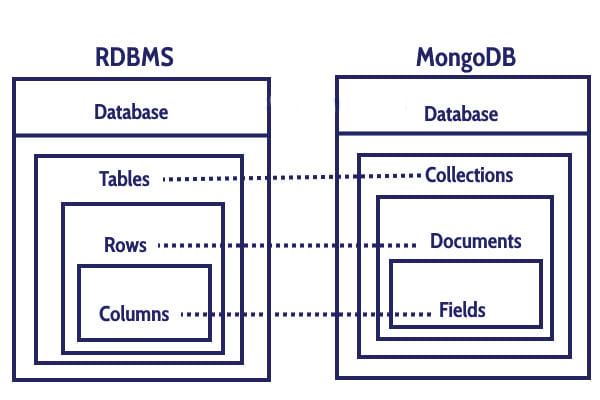What is it?
MongoDB is a document-oriented NoSQL database, used mainly for web systems, when minimal access to the database is required and where the the elements of a document are dynamic and changed frequently. A collection of similar documents don’t necessarily need to share the same fields, and a document can contain other documents inside of it (implying a embedded model). This greatly improves read performance, once joins between documents are not needed, but may worsen write performance.

Modelling
Document-oriented databases are commonly modeled for performance, which can focus either on read performance or write performance, respectively:
-
Embedded Modelling
A parent document contains all related documents within itself, which removes the need of join operations, and improves read performance by keeping related data together. However, data can be easily duplicated and be limited by document size (MongoDB sets a size limit of 16MB).
{
"id": 1,
"name": "User X",
"contact": {
"phone": "(01) 23456-7890",
"email": "userx@email.com"
},
"profile": {
"level": 1,
"group": "admin"
}
}-
Normalized Modelling
Related documents are connected by using relational references, similar to SQL, which reduces duplicated data and may be a simpler approach to model large hierarchical data. Both read and write performance can be faster if only some fields of a document are frequently read and updated. However, retrieving the full document is slower.
{ // Person
"id": 1,
"name": "User X"
}
{ // Contact
"id": 1,
"personID": 1,
"phone": "(01) 23456-7890",
"email": "userx@email.com"
}
{ // Profile
"id": 1,
"personID": 1,
"level": 1,
"group": "admin"
}Use case
MongoDB is used primarily for content management and web systems which are based on catalogs as data sources. Any system that uses documents as a base data source and would benefit from a flexible schema, is a great use-case for MongoDB.